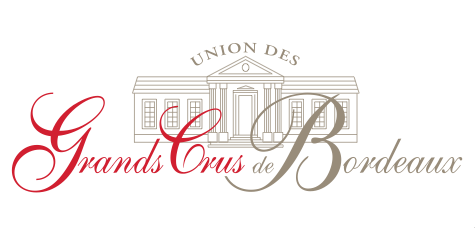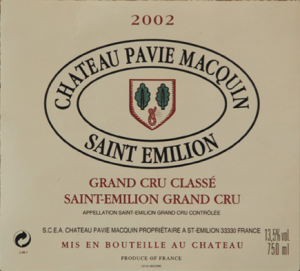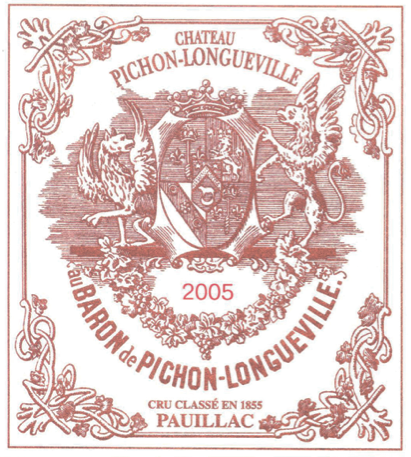On Monday, January 24, I had the pleasure of attending the 2008 Vintage Tasting presented by Union des Grands Crus de Bordeaux, at the Drake Hotel in Chicago. More than 100 different wines were poured.
The overall impression of 2008 is of a good, but not great, vintage—a vintage for the table, not the cellar. Many of the wines were obviously quite young, but even those seemed to hint that they needed only years, not decades, to reach their peak. Tart red fruits and bright acids were far more prevalent than deep black sweet fruits with enormous walls of tannins that need decades to crumble.
The following tasting notes provide passing observations, rather than in-depth reviews, as the limited time, the crowd, and the volume in the room made it impossible for this reviewer to promise the best possible light on any particular wine. The best of each appellation is included, with full reviews to be included in future Palate Press Tasting Notes.
Graves
I was starting to doubt my palate by the time I got back to the Graves tables to review the reds, but one of the two whites, the Château Rahoul, offered the most promise.
Château Rahoul
Blanc – 80% Sémillon, 20% Sauvignon Blanc, 35% new barrels. More subtle and seductive than the razor-sharp Chantegrive, this white presented a nose of very lightly toasted bread, some caramel, and tropical fruit. On the palate, the tropical fruit gave way to citrus, predominately lemon, though the tropical remained in the background. Acids, again, were high, but not to the point of a tingle. This would pair nicely with any white fish. Recommended.
Pessac-Léognan
For Pessac-Léognan, also, my palate was getting tired when I got back to the reds. Only two, Château Pape Clément and Château Smith Haut-Lafitte, could be recommended with confidence. The whites were fully reviewed and revealed one of the most interesting and highly recommended wines of the day: Château Bouscaut Blanc. Château Pape Clément Blanc was also highly recommended, while five other wines were recommended: Domaine de Chevalier Blanc, Château de Fieuzal Blanc, Château Larrivet-Haut-Brion Blanc, Château Olivier Blanc, and Château Smith Haut-Lafitte.
Château Bouscaut
Blanc – 50% Sémillon, 50% Sauvignon Blanc, 12 months in 50% new barrels. This was, without a doubt, the most interesting of the whites. The nose had a light toast to it, but it also hinted at the uniqueness of the palate, presenting significant aromas of leafy herbs, with rosemary in the lead. On the palate, citrus, lemon and lime, plus a little bit of apple, were all wrapped in a summer patch of leafy herbs, rosemary, marjoram, and more. A singular wine among all the whites, this is worth seeking out for the experience. Drink this with pork loin. Highly recommended.
Château Pape-Clément
Blanc – 45% Sauvignon Blanc, 45% Sémillon, 10% Muscadelle, 15 months in new barrels. Vanilla, caramel, and baked pears showed on the nose. On the palate, pear eventually gave way to citrus on a lingering finish. Acids were bright but balanced, suggesting it will do well with 5-10 years in the cellar, but why not drink now? Drink with stuffed flounder. Highly recommended.
Saint-Émilion

The overall review of Saint-Émilion is mixed. Many of the wines the lacked the depth of better vintages, showing primary red fruits without a lot of depth or layers. Five, though, seem to have done the best job of carefully selecting fruit and were able to deliver highly recommended wines.
Château Canon la Gaffelière
Rouge – 55% Merlot, 40% Cabernet Franc, 5% Cabernet Sauvignon, aged in 80-100% new barrels. The nose opens with lovely floral aromas, primarily violets. On the palate, a spicy blend of dried red fruits, red currant and raspberry, blend with blackberry and cocoa. It is very young, tannins powerful, but acids offer balance. This is one for the cellar. Highly Recommended.
Château Dassault
Rouge – 70% Merlot, 20% Cabernet Franc, 10% Cabernet Sauvignon, aged in 75-100% new barrels. Tannins are very powerful. This infant needs plenty of cellar time before it comes of age. The palate is very clean, offering up blackcurrant followed by unsweetened chocolate. Highly recommended.
Château La Dominique
Rouge – 86% Merlot, 12% Cabernet Franc, 2% Cabernet Sauvignon, aged in 50-70% new barrels. Blackcurrant and tobacco, followed by eucalyptus, with a lingering finish. Tannins are prominent, but well balanced. This is one for the cellar. Highly recommended.
Château La Gaffelière
Rouge – 80% Merlot, 20% Cabernet Franc, 12 months in new barrels. Very nice red fruit up front, slowly darkening on the palate, first to black cherry, then juicy plum. Tannins and acids are both high in this very young wine. It shows terrific balance and promise. Buy some for the cellar. Highly recommended.
Château Pavie-Macquin
Rouge – 80% Merlot, 18% Cabernet Franc, 2% Cabernet Sauvignon. Great depth on the nose, bright red fruits and an underlying sense of limestone. On the palate, unsweetened cranberry gives way to darker fruit, but great big tannins and great big acids, well balanced, dominate the promising fruit flavors. This is barely an infant, but will likely reward significant cellar time to those with the patience to wait. Highly recommended.
Pomerol
The wines of Pomerol delivered some depth and layering. A couple did seem to be entering their dumb phase already, making them hard to judge fairly. Two showed promise if given time in the cellar, and are highly recommended.
Château Clinet
Rouge – 85% Merlot, 10% Cabernet Sauvignon, 5% Cabernet Franc, 18-22 months in 70% new oak. Blackcurrant, fennel, black pepper, and touch of tobacco, all appear in layers from attack to finish. Tannins are very smooth but powerful, acids match. A wine for the cellar. Highly recommended.
Château Gazin
Rouge – 90% Merlot, 7% Cabernet Sauvignon, 3% Cabernet Franc, 50% new oak. This seems to be entering its dumb phase, but it shows big tannins, loads of herbs and flowers along with black fruit. With a lot of time in the cellar, this could be great. Highly recommended.
Margaux
The wines of Margaux were, consistently, the best of the reds. The best showed terrific depth, evolution on the palate, often from bright red fruits to deep black ones, and good length. Five different wines were highly recommended, Château Brane-Cantenac, Château Lascombes, Château Malescot Saint-Exupéry, Château Marquis de Terme, and Château Rauzan-Ségla, and two were very highly recommended.
Château Giscours
Rouge – 55% Cabernet Sauvignon, 40% Merlot, 5% Cabernet Franc and Petit Verdot, aged 15-18 months in 50% new oak. Deep black fruits, blackcurrant, blackberry, plum, and rich meat like bloody Beef Wellington wrapped in pastry, plus an herbal hint, more tobacco than mint. A big, long finish. Very highly recommended.
Château Kirwan
Rouge – 40% Cabernet Sauvignon, 30% Merlot, 20% Cabernet Franc, 10% Petit Verdot, aged in 35% new barrels. One of the best reds of the night, this was absolute silk on the palate. Tannins were powerful, but so silky and sweet they did not set up a wall to the fruit, a blend of blackcurrant and black cherry. Balance was marvelous, finish was long and lingering. This could linger for years in the cellar, but why wait? It is drinking marvelously right now. Very highly recommended.
Saint Julien
Saint Julien did not provide the best wines of the evening, most of them lacking the depth of the best vintages, but it did offer some of the best wines for early drinking with some decanting. Four were highly recommended, but only one suggested for long-term cellaring.
Château Gruaud-Larose
Rouge – 62% Cabernet Sauvignon, 31% Merlot, 5% Cabernet Franc, 2% Petit Verdot. The color is a brilliant ruby. The palate is softer than many, with tannins milder than most, and some raspberry appears to balance out the black fruit. Highly recommended.
Château Lagrange
Rouge – 66% Cabernet Sauvignon, 27% Merlot, 7% Petit Verdot, aged 20 months in 60% new barrels. Soft red flavors of red cherry and raspberry. The tannins are deceptive: very powerful, but soft and silky, more suede than leather, with a lovely finish. Highly recommended.
Château Léoville Poyferré
Rouge – 63% Cabernet Sauvignon, 27% Merlot, 3% Petit Verdot, 2% Cabernet Franc, aged in 75% new barrels. This is a big, tannic wine, all black fruit and leather destined for years in the cellar. The balance and promise are both terrific. Highly recommended.
Château Talbot
Rouge – 67% Cabernet Sauvignon, 26% Merlot, 5% Petit Verdot, 2% Cabernet Franc, aged in 50% new barrels. Leafy herbs and eucalyptus overlay blackcurrant, plums, and roast meat. It will knit together better with time in the cellar, but could certainly be enjoyed now with some decanting. Highly recommended.
Pauillac
 Pauillac was a mixed bag, bringing wines that ranged from not recommended to very highly recommended, but it did provide one of the best wines of the evening. All of them were among the most herbal and layered of the evening, but balance seemed to be a challenge.
Pauillac was a mixed bag, bringing wines that ranged from not recommended to very highly recommended, but it did provide one of the best wines of the evening. All of them were among the most herbal and layered of the evening, but balance seemed to be a challenge.
Château Pichon Longueville
Rouge – 62% Cabernet Sauvignon, 35% Merlot, 3% Cabernet Franc, aged 16-18 months. On the nose, mocha leaps from the glass, followed by mint. It is multi-layered, starting with light red fruit, then darkens to black fruit an licorice on the finish. Mocha and fennel make appearances on the mid-palate. The balance is excellent. Very highly recommended.
Saint-Estèphe
The wines of Saint-Estêphe were herbal and spicy. One, Château de Pez, bordered on the very highly recommended, and might have been had it not seemed to be just starting to enter its dumb phase.
Château de Pez
Rouge – 45% Cabernet Sauvignon, 44% Merlot, 8% Cabernet Franc, 3% Petit Verdot, aged in 40% new barrels. High-toned and high-flying, the aromas are all florals and leafy herbs, roses, marjoram and sage. Delicate fruits play second fiddle to the flowers and herbs, though they might just be hitting a shy stage. It is very nice, and promises to be very interesting as it develops over the years. Highly recommended.
Barsac-Sauternes
The sweet wines of Barsac and Sauternes were the best of the evening. While 2008 is a good, but not great, vintage for red wines, the best of the sweet whites were amazing, sending wave after wave of layered flavors across the palate and lingering for half a minute or more. The two best, Château Climens and Château Coutet, were as different as night and day, one more subtly sweet and aggressively herbal and floral, one offering hints of nuttiness to come from a decade or more in the cellar, while the other danced between honeyed fruit and razor-sharp high tones. Both will reward a decade or more in the cellar, but will tempt the buyer to open one, just one, and then perhaps just one more, right away.
Château Climens
Contains 100% Semillon, aged in 60% new barrels. The superstar of the night. This was a startling wine. On the nose it showed sweet pear and apricot, and barely a hint of the herbal and floral flavors to follow. On the palate, the sweet pear and peach were joined by an intense herbal background and a garden full of flowers, all rolling across the palate in wave after wave of flavors. In the distant background, promising to come to the fore with a decade or two in the cellar, roasted chestnut and honeyed pecan lingered, waiting for their time. Buy as much as you can, enjoy one now, then save the rest for your fiftieth wedding anniversary or the birth of a grandchild. Very highly recommended.
Château Coutet
Contains 23% Sauvignon Blanc, 75% Semillon, 2% Muscadelle, aged in 100% new barrels. Honeyed pears and apricots waft up from the glass. The palate opens with honey, sweet sesame paste and pears in syrup, followed by tarter Meyer Lemon, first candied, then pure. A hint of herbal flavors appear on the finish, starting with leafy herbs and ending with spearmint. There is marvelous complexity, with years to mature and knot together. On a second taste, more for overall impression than specific flavors: so bright! A golden, honeyed droplet rolling on the tongue, sweet yet not even a little cloying, amazing, feminine, and lovely. Very highly recommended.
 David Honig, the Publisher, looked at the thousands of quality wine blogs and realized there was a ready-made staff for the best wine magazine in the world. David has been running 2 Days per Bottle for two years now, and started up The 89 Project, focusing on that most unfortunate of scores, “89.” He is a self-educated oenophile and defers to the tremendous experience and wisdom of the amazing staff at PALATE PRESS: The Online Wine Magazine.
David Honig, the Publisher, looked at the thousands of quality wine blogs and realized there was a ready-made staff for the best wine magazine in the world. David has been running 2 Days per Bottle for two years now, and started up The 89 Project, focusing on that most unfortunate of scores, “89.” He is a self-educated oenophile and defers to the tremendous experience and wisdom of the amazing staff at PALATE PRESS: The Online Wine Magazine.
